
Ratanakiri: Cambodia's Hidden Gem
Discover the unspoiled beauty of Ratanakiri Province in Cambodia, a remote paradise of lush forests, ethnic villages, and adventurous trekking routes.
Nestled in the northeastern corner of Cambodia, Ratanakiri Province is a paradise for nature lovers and adventure seekers. This remote region is adorned with lush forests, rolling hills, and pristine waterfalls, making it an ideal destination for those looking to escape the hustle and bustle of city life. The province's name, derived from the Khmer words for 'gem' and 'mountain,' aptly describes its scenic beauty and rugged terrain. One of the highlights of Ratanakiri is the stunning Yeak Laom Lake, a volcanic crater lake surrounded by dense jungle. The crystal-clear waters provide a perfect spot for swimming, picnicking, and enjoying the serene natural surroundings. Visitors can also explore the nearby ethnic minority villages to learn about the unique cultures and traditions of the indigenous people, such as the Tampuan, Kreung, and Jarai tribes. For those seeking adventure, Ratanakiri offers numerous trekking opportunities through its national parks and protected areas. Virachey National Park, one of Cambodia's largest and most remote national parks, is home to diverse wildlife and offers challenging treks for the intrepid traveler. The province is also known for its scenic waterfalls, including Cha Ong, Ka Tieng, and Kachanh, each offering its own unique charm and breathtaking views.
Local tips in Ratanakiri Province
- Visit during the dry season from November to April for the best weather and easier travel conditions.
- Hire a local guide to explore the ethnic minority villages and learn about their unique cultures and traditions.
- Bring sturdy footwear for trekking and exploring the rugged terrain of the national parks.
- Don't miss a swim in the serene Yeak Laom Lake, especially in the early morning when it's most peaceful.
- Try local delicacies at the Ban Lung market for an authentic taste of Ratanakiri cuisine.
Ratanakiri: Cambodia's Hidden Gem
Nestled in the northeastern corner of Cambodia, Ratanakiri Province is a paradise for nature lovers and adventure seekers. This remote region is adorned with lush forests, rolling hills, and pristine waterfalls, making it an ideal destination for those looking to escape the hustle and bustle of city life. The province's name, derived from the Khmer words for 'gem' and 'mountain,' aptly describes its scenic beauty and rugged terrain. One of the highlights of Ratanakiri is the stunning Yeak Laom Lake, a volcanic crater lake surrounded by dense jungle. The crystal-clear waters provide a perfect spot for swimming, picnicking, and enjoying the serene natural surroundings. Visitors can also explore the nearby ethnic minority villages to learn about the unique cultures and traditions of the indigenous people, such as the Tampuan, Kreung, and Jarai tribes. For those seeking adventure, Ratanakiri offers numerous trekking opportunities through its national parks and protected areas. Virachey National Park, one of Cambodia's largest and most remote national parks, is home to diverse wildlife and offers challenging treks for the intrepid traveler. The province is also known for its scenic waterfalls, including Cha Ong, Ka Tieng, and Kachanh, each offering its own unique charm and breathtaking views.
When is the best time to go to Ratanakiri Province?
Iconic landmarks you can’t miss
Kachanh Waterfall
Experience the natural beauty of Kachanh Waterfall, a serene escape in Ratanakiri province, Cambodia, perfect for relaxation and stunning photography.

Katieng Waterfall
Experience the breathtaking beauty of Katieng Waterfall, a tranquil paradise in Krong Ban Lung, Cambodia, perfect for nature lovers and adventure seekers.
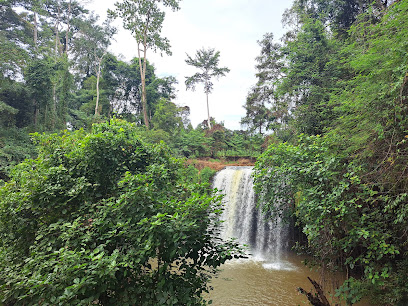
7 Steps Waterfall
Experience the breathtaking beauty of the 7 Steps Waterfall in Ratanakiri, Cambodia – a serene escape into nature's splendor.

Cha Ong Waterfall, Ratanakiri
Explore the enchanting Cha Ong Waterfall in Ratanakiri, a natural paradise perfect for swimming, picnicking, and breathtaking views amidst lush greenery.

Unmissable attractions to see
Kachanh Waterfall
Explore Kachanh Waterfall, a breathtaking natural attraction in Krong Ban Lung, Cambodia, perfect for adventure seekers and nature lovers alike.

Katieng Waterfall
Explore the captivating beauty of Katieng Waterfall in Krong Ban Lung, a natural wonder perfect for adventure and relaxation.

Green jungle trekking Tours-Cambodia
Discover the breathtaking beauty of Cambodia's wilderness with Green Jungle Trekking Tours, a unique hiking adventure in Krong Ban Lung.

7 Steps Waterfall
Experience the enchanting beauty of 7 Steps Waterfall in Krong Ban Lung, a perfect blend of adventure and tranquility in Cambodia's lush landscapes.

Cha Ong Waterfall, Ratanakiri
Experience the breathtaking beauty and tranquil atmosphere of Cha Ong Waterfall, a must-visit natural wonder in Ratanakiri, Cambodia.

Lomkod Lake
Lomkod Lake offers a peaceful escape into nature, surrounded by lush landscapes perfect for relaxation and exploration in Samot Leu, Cambodia.

Sonatrekking tours & jungle Trekking _Cambodia
Explore Cambodia's stunning jungles with Sonatrekking Tours, where breathtaking hikes and rich biodiversity await every adventurer.

Lucky Jungle Trekking Tours Banlung, Ratanakiri, Cambodia
Explore the lush jungles and stunning waterfalls of Ratanakiri with Lucky Jungle Trekking Tours, a top destination for adventure seekers in Cambodia.

Essential places to dine
Arunras Restaurant
Discover authentic Cambodian flavors at Arunras Restaurant in Krong Stueng Saen - where every dish tells a story.

The Green Carrot restaurant & bar
Discover culinary delights at The Green Carrot, where Asian flavors meet Western favorites in Krong Ban Lung's vibrant dining scene.

Changkran Khmer Restaurant
Savor authentic Cambodian flavors in an elegant setting at Changkran Khmer Restaurant - where tradition meets fine dining.

Ratanakiri- Boutique Hotel
Experience tranquility at Ratanakiri Boutique Hotel – your gateway to stunning landscapes and authentic Khmer cuisine.

Yeak Loam Hotel & Spa
Discover serenity at Yeak Loam Hotel & Spa—your perfect blend of comfort and adventure in Ratanakiri Province.

Terres Rouges Lodge
Discover serenity at Terres Rouges Lodge in Krong Ban Lung—your gateway to Ratanakiri's stunning landscapes and rich culture.

Banlung Reggae Bar & Restaurant
Discover authentic Cambodian cuisine and vibrant reggae vibes at Banlung Reggae Bar & Restaurant - your ultimate dining experience in Banlung.

Eang Monyratanak Hotel
Discover comfort and nature at Eang Monyratanak Hotel in Banlung - your perfect getaway in Cambodia's stunning Ratanakiri Province.

Paradise Restaurant
Experience authentic Cambodian flavors at Paradise Restaurant in Krong Ban Lung – a breakfast haven for food lovers.

Molyka Lodge
Discover tranquility at Molyka Lodge: Your gateway to exploring the natural beauty of Banlung and Ratanakiri Province.
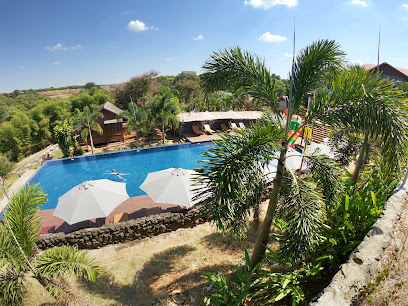
Café Amazon
Discover the tranquility of Café Amazon in Krong Ban Lung – where exceptional coffee meets breathtaking views in Cambodia's lush landscape.

Ratanak Sombath Hotel
Experience comfort and local charm at Ratanak Sombath Hotel in Krong Ban Lung, your perfect base for exploring Ratanakiri's stunning landscapes.

The Corner restaurant
Discover the perfect blend of Western flavors and authentic Khmer dishes at The Corner Restaurant in Krong Ban Lung.
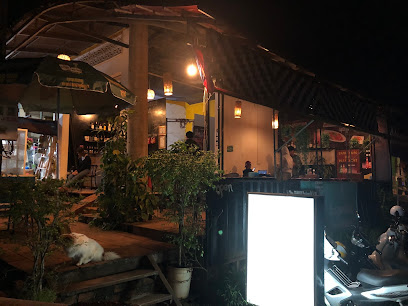
Bee Bee’s Chalets
Discover tranquility at Bee Bee's Chalets – your cozy retreat in Krong Ban Lung, Cambodia amidst nature's breathtaking beauty.

Yaly Chanang Pork Leg Restaurant យ៉ាលីចាណាងជើងជ្រូកបឹងកន្សែង
Experience authentic Cambodian cuisine at Yaly Chanang Pork Leg Restaurant in Krong Ban Lung - where flavor meets tradition.

Markets, malls and hidden boutiques
Ratanakiri- Boutique Hotel
Discover the serene beauty of Ratanakiri at Ratanakiri Boutique Hotel, your perfect retreat in Cambodia's lush landscapes.

SETRA Coffee
Discover the cozy charm of SETRA Coffee in Krong Ban Lung, where local culture meets quality brews in a relaxing atmosphere.

CAREMCHU
Indulge in the sweetest treats at CAREMCHU, Ratanakiri's beloved cake shop, where every bite is a taste of happiness and local culture.

Ly ChengHeng Shop
Explore the best of technology at Ly ChengHeng Shop in Banlung, your go-to electronics destination for all your gadget needs.

Blue zircon Ratanakiri stone
Explore the enchanting Blue Zircon Ratanakiri stone shop in Krong Ban Lung, a jewel of Cambodia's vibrant gemstone culture.

Nang Chan Jar Wine Shop
Explore the rich tradition of Cambodian winemaking at Nang Chan Jar Wine Shop in Krong Ban Lung, where every bottle tells a story.

ដេប៉ូ ទ្រី សាន ផ្គត់ផ្គង់សំភារៈសំណង់ និង គ្រឿងអគ្គិសនី
Discover quality home goods and construction supplies at Dépôt Trie San in Krong Ban Lung, the ultimate shopping destination for tourists and locals alike.

BookPen Shop
Discover unique souvenirs at BookPen Shop in Krong Ban Lung, where local craftsmanship meets vibrant culture for the perfect travel keepsake.

Pheakna Store
Discover quality building materials, solar energy solutions, and reliable car batteries at Pheakna Store in Banlung, Cambodia.

Sakura Recycle Shop Japan Rattanakiri
Uncover unique second-hand clothing and sustainable fashion at Sakura Recycle Shop in Krong Ban Lung, a must-visit for eco-conscious travelers.

កូន តាញ៉ាញ់ (ឈាន មួយគា )
Experience the craftsmanship of Cambodia at កូន តាញ៉ាញ់, a unique tool store in Krong Ban Lung showcasing local artistry and traditional tools.

ង៉ែត លី លក់កង់
Discover the beauty of Ratanakiri by bike at Ngat Ly Bike Shop, your gateway to adventure in Krong Ban Lung.

ចាប់ហ៊ួយ 1លាន 80មុខ
Experience the heart of Krong Ban Lung at Chab Huy 1 Lian 80 Muk, a vibrant grocery store showcasing local flavors and fresh produce.

សាគូរ៉ា
Explore the unique offerings of សាគូរ៉ា, a charming general store in Krong Ban Lung, where local culture meets tourist needs.

Sophat Car&Motorcycle wash and Wholesale and retail all types
Experience top-notch vehicle care at Sophat Car & Motorcycle Wash in Ou Chum, where quality service meets local charm.

Essential bars & hidden hideouts
The Green Carrot restaurant & bar
Experience the flavors of Asia and the West at The Green Carrot restaurant & bar in Krong Ban Lung, Cambodia, where culinary diversity meets affordability.

Banlung Reggae Bar & Restaurant
Discover the vibrant flavors and lively atmosphere of Banlung Reggae Bar & Restaurant, a culinary hotspot in the heart of Banlung, Cambodia.
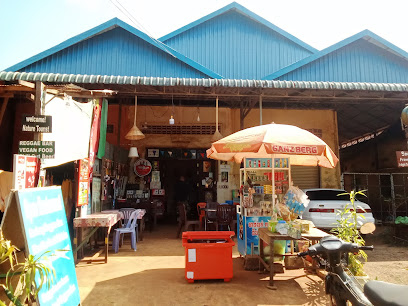
Paradise Restaurant
Discover authentic Cambodian breakfast delights in a cozy atmosphere at Paradise Restaurant in Krong Ban Lung.

The Corner restaurant
Experience the vibrant flavors of Krong Ban Lung at The Corner Restaurant, a grill lover's paradise with a touch of local charm.

Reggae bar homestay& Jungle trekking
Discover the vibrant culture of Ratanakiri at Reggae Bar Homestay, your gateway to jungle adventures and unforgettable musical experiences.

កាឡាក់ស៊ី ខារ៉ាអូខេ
Experience vibrant nightlife at Kralachy Karaoke in Krong Ban Lung, the perfect bar for refreshing drinks and lively entertainment.
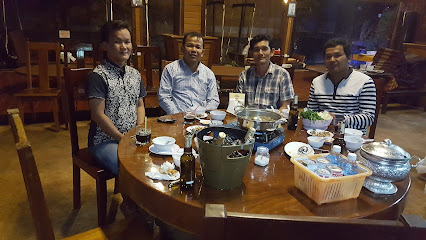
Neak Meas KTV
Experience the vibrant nightlife of Krong Ban Lung at Neak Meas KTV, where music and fun come together in an unforgettable karaoke experience.

Setra Sky Bar
Discover the enchanting views and serene ambiance at Setra Sky Bar, the perfect rooftop retreat in Krong Ban Lung, Cambodia.

Ta chea bar (jungle )
Discover the enchanting Ta Chea Bar in Krong Ban Lung, where local flavors meet the serenity of the jungle for an unforgettable dining experience.
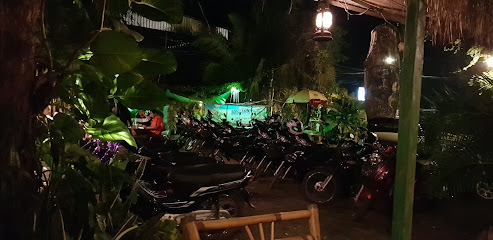
Kiri Cafe គិរីកាហ្វេ
Discover authentic Cambodian cuisine at Kiri Cafe, a cozy restaurant in Banlung, Ratanakiri, perfect for travelers seeking local flavors.

Pub Zone
Enjoy the lively nightlife of Krong Ban Lung at Pub Zone, your go-to bar for refreshing drinks and a vibrant atmosphere.
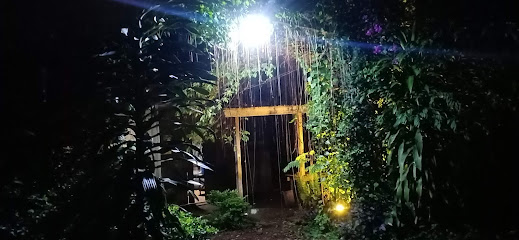
ហាងលក់សាច់ពិសេសខ្វៃ
Discover authentic Cambodian cuisine at the renowned restaurant, ហាងលក់សាច់ពិសេសខ្វៃ, featuring specialty meats and a warm atmosphere.

MdArif
Discover the vibrant atmosphere of MdArif, a charming bar in Krong Ban Lung, known for its unique drinks and welcoming ambiance.

ta chea pub natural
Experience authentic Cambodian cuisine at Ta Chea Pub Natural in Krong Ban Lung, where fresh ingredients meet traditional flavors in a welcoming atmosphere.

ដីចម្ការរបស់ប្រុសស្មោះ ម៉ៅ ប៊ុនណា
Discover the lively atmosphere of Mao Bunna's Bar in Dok Yong, a vibrant spot for cocktails and cultural experiences.

Local Phrases about Ratanakiri Province
-
- Helloជំរាបសួស្តី
[chom reab suor] - Goodbyeលាហើយ
[leah ey] - Yesបាទ
[baat] - Noទេ
[te] - Please/You're welcomeសូម
[som] - Thank youអរគុណ
[aw kohn] - Excuse me/Sorryសុខសប្បាយ
[sok sabai] - How are you?តើអ្នកសុខសប្បាយឬ?
[tvey neak sok sabai or?] - Fine. And you?សុខសប្បាយ។ និងអ្នកអោយ?
[sok sabai. nung neak yao?] - Do you speak English?តើអ្នកនិយាយភាសាអង្គរឬ?
[tvey neak niyeay phasa angke or?] - I don't understandខ្ញុំមិនយល់ពីនេះទេ
[knhom min yol pi ney te]
- Helloជំរាបសួស្តី
-
- I'd like to see the menu, pleaseខ្ញុំចង់មើលម៉ឺនុយសូម
[knhom chong moul menoum som] - I don't eat meatខ្ញុំមិនធ្វើសាច់
[knhom min dve sach] - Cheers!ជូរ
[chol] - I would like to pay, pleaseខ្ញុំចង់បង់ទូរទស្សសូម
[knhom chong bong tor tor som]
- I'd like to see the menu, pleaseខ្ញុំចង់មើលម៉ឺនុយសូម
-
- Help!ជួយ!
[chuoy!] - Go away!ចាកចេញ!
[cak chenh!] - Call the Police!ហៅប្រធានបណ្តុះប្រជាមពេល!
[haw prathin pondeh pracham peal!] - Call a doctor!ហៅបុបជំននិយ!
[haw bop chamnam niy!] - I'm lostខ្ញុំបានគូរ
[knhom bann kuoy] - I'm illខ្ញុំមានជំងឺ
[knhom mean chmong]
- Help!ជួយ!
-
- I'd like to buy...ខ្ញុំចង់ទិញ...
[knhom chong toun...] - I'm just lookingខ្ញុំតែមើលប៉ុន្មារ
[knhom tae moul ponmar] - How much is it?តើវាគឺស៍ប៉ុន្មារម៉ារដ្ឋរួច?
[tvey veak sru ponmar maarat ruoc?] - That's too expensiveនេះគឺតិ្រូចខ្លាំងពណ៌
[ney koteuk klam pong] - Can you lower the price?តើអ្នកអាកបានតិ៍ធិតិដ្ឋរួចទេ?
[tvey neak ak ban tuk tuk daar ruoc te?]
- I'd like to buy...ខ្ញុំចង់ទិញ...
-
- What time is it?ម៉ោងណា?
[moang na?] - It's one o'clockវាអួចមួយ
[vea ouc muoy] - Half past (10)ពីរកាត់ដូចមួយ
[pi ka tao doch muoy] - Morningពេលព្រឹក
[pel preuk] - Afternoonពេលល្ងាច
[pel langcha] - Eveningពេលយប់
[pel yab] - Yesterdayម្សិល
[msul] - Todayថ្ងៃនេះ
[thang ney] - Tomorrowថ្ងៃស្អែ
[thang sae] - 1មួយ
[muoy] - 2ពីរ
[pii] - 3បី
[bei] - 4បួន
[buon] - 5ប្រាំ
[bram] - 6ល្ង
[lang] - 7ប៉ែត
[paet] - 8បួនបី
[buon bei] - 9កណ្តេរ
[kandae] - 10ដប់
[dop]
- What time is it?ម៉ោងណា?
-
- Where's a/the...?នេះគឺស៍ណា?
[ney koteuk na?] - What's the address?អាសយដ្ឋដើមណា?
[asydat dem na?] - Can you show me (on the map)?តើអ្នកអាកបានបង់ឯកត្តរូចទេ?
[tvey neak ak ban bong okat ruoc te?] - When's the next (bus)?នៅពេលណាហើយខ្ញុំត្រូវស្រលាង?
[nupel na ey knhom trov sralang?] - A ticket (to ....)សំបុត្រភ្លកទៅ...
[sombot pleak to...]
- Where's a/the...?នេះគឺស៍ណា?
History of Ratanakiri Province
-
Ratanakiri Province, located in the northeastern part of Cambodia, is rich in archaeological sites that date back to prehistoric times. Evidence of early human settlement has been found in the form of stone tools and pottery fragments, indicating that the region has been inhabited for thousands of years. These artifacts suggest that the area was home to some of the earliest human communities in Southeast Asia.
-
Ratanakiri is home to several indigenous groups, including the Tampuan, Kreung, and Jarai. These ethnic minorities have lived in the region for centuries, developing unique cultures, languages, and traditions. The indigenous communities are known for their distinctive stilt houses, elaborate funerary practices, and vibrant textile arts. Their way of life has been shaped by the natural environment, with a heavy reliance on agriculture, hunting, and gathering.
-
During the late 19th and early 20th centuries, Ratanakiri came under French colonial rule as part of French Indochina. The French administration established rubber plantations and introduced new agricultural practices, which significantly altered the landscape and economy of the province. Despite these changes, the indigenous communities largely maintained their traditional ways of life, though they were often marginalized and faced various challenges under colonial rule.
-
Ratanakiri's remote location made it a strategic area during the Vietnam War. The Ho Chi Minh Trail, a vital supply route for North Vietnamese forces, passed through the province, leading to significant military activity and bombing campaigns. The war had devastating effects on the local population and environment. After the war, Ratanakiri faced further turmoil during the Khmer Rouge regime, which led to widespread suffering and displacement of communities.
-
In recent decades, Ratanakiri has seen increased development, including infrastructure improvements and the growth of tourism. The province is renowned for its stunning natural beauty, with attractions such as Yeak Laom Lake, Virachey National Park, and numerous waterfalls. Efforts have been made to balance development with conservation, focusing on protecting the region's rich biodiversity and cultural heritage. Indigenous communities continue to play a crucial role in these efforts, advocating for sustainable practices and the preservation of their ancestral lands.
Ratanakiri Province Essentials
-
Ratanakiri Province is located in northeastern Cambodia. The nearest major airport is Phnom Penh International Airport, about 600 kilometers away. From Phnom Penh, you can take a domestic flight to Banlung, the provincial capital. Alternatively, you can take a bus or hire a private taxi from Phnom Penh or Siem Reap. The journey by road takes approximately 8-10 hours. Buses are the more economical option, whereas private taxis offer more comfort and flexibility.
-
Within Ratanakiri, transportation options include tuk-tuks, motorbike taxis, and rental motorbikes. Tuk-tuks and motorbike taxis are widely available in Banlung and are ideal for short distances. For more freedom, consider renting a motorbike to explore the province on your own. Roads can be rough, especially during the rainy season, so a sturdy vehicle is recommended. Local buses and shared taxis are available for traveling between towns and villages.
-
The official currency in Cambodia is the Cambodian Riel (KHR), but US Dollars (USD) are widely accepted. Credit cards are accepted in some hotels and larger restaurants, but cash is still the preferred method of payment, especially in rural areas. ATMs are available in Banlung, and it’s wise to carry sufficient cash when traveling to remote areas. Ensure you have small denominations as change can be scarce.
-
Ratanakiri is generally safe for tourists, but it’s advisable to take standard precautions. Petty theft can occur, so keep an eye on your belongings, especially in crowded areas. Avoid walking alone at night in unfamiliar areas. Some remote areas may have unexploded ordnance from past conflicts; always stick to well-trodden paths and follow local advice. There are no specific high-crime areas targeting tourists, but always stay vigilant.
-
In case of emergency, dial 117 for police, 118 for fire, and 119 for medical assistance. The provincial hospital in Banlung offers basic medical services, but for serious conditions, evacuation to a larger city may be necessary. It is highly recommended to have travel insurance that covers medical emergencies and evacuation. Pharmacies are available in Banlung for minor health issues.
-
Fashion: Do dress modestly, especially when visiting temples and villages. Avoid wearing revealing clothing. Religion: Do respect local customs and traditions. Remove your shoes and cover your shoulders when entering temples. Public Transport: Do be respectful and patient. Shared taxis and buses can be crowded. Don't eat or drink on public transport. Greetings: Do greet people with a slight bow or a 'sampeah' (pressing your palms together). Eating & Drinking: Do try local foods and accept invitations to eat with locals. Don't refuse food or drink as it may be considered impolite.
-
To experience Ratanakiri like a local, visit the Banlung market where you can buy fresh produce and local crafts. Engage with locals, who are often friendly and willing to share stories about their culture. Don't miss visiting the crater lake Yeak Laom, which is a popular spot for swimming and picnicking. For a unique experience, join a guided trek to explore the jungle and visit indigenous villages. Always seek permission before taking photos of people, especially in remote villages.
Nearby Cities to Ratanakiri Province
-
Things To Do in Champasak
-
Things To Do in Kratie
-
Things To Do in Pakse
-
Things To Do in Quy Nhon
-
Things To Do in Tam Ky
-
Things To Do in Dalat
-
Things To Do in Hoi An
-
Things To Do in Da Nang
-
Things To Do in Ubon Ratchathani
-
Things To Do in Nha Trang
-
Things To Do in Hue
-
Things To Do in Ho Chi Minh City
-
Things To Do in Phan Thiet
-
Things To Do in Phnom Penh
-
Things To Do in Mui Ne








